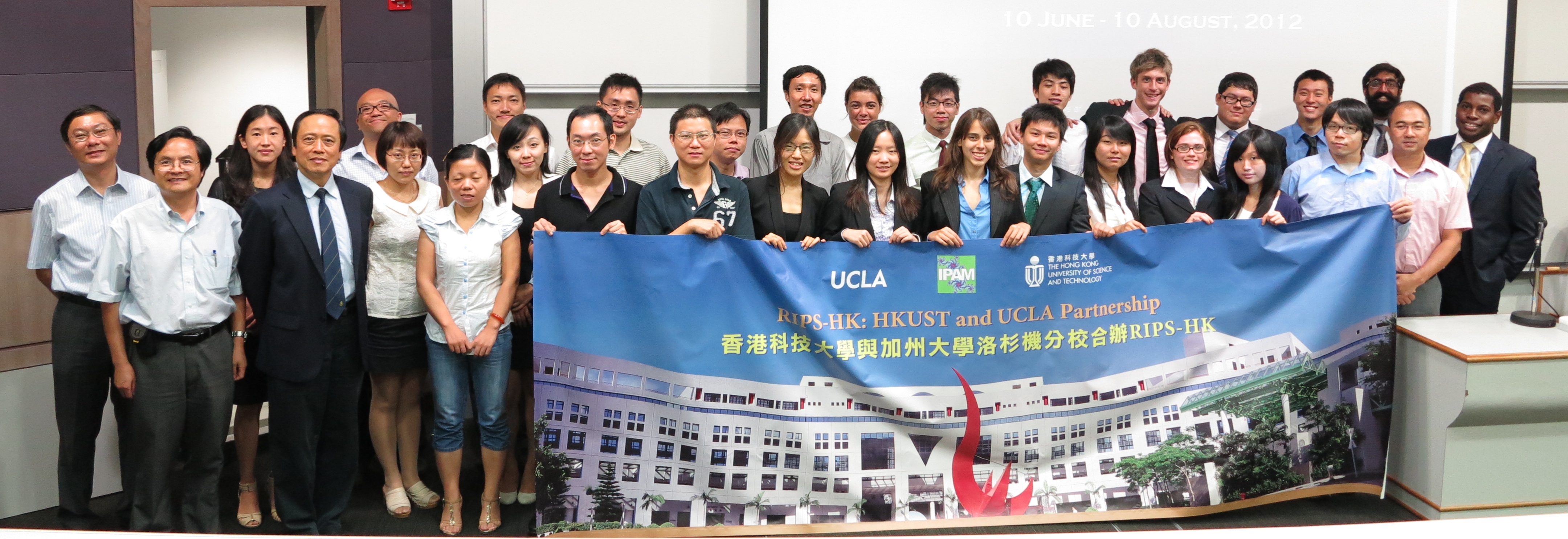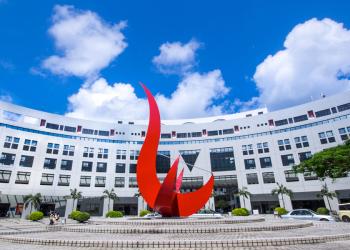HKUST Hosts RIPS For Elite US and Hong Kong Students to Apply Mathematical Insights to Industry Problems
The Hong Kong University of Science and Technology (HKUST) hosted its second-ever Research in Industrial Projects for Students (RIPS-HK), with 16 undergraduates from the US and Hong Kong coming under the tutelage of university faculty and industry professionals to apply mathematical theories and computational skills to a wide palette of real-life problems proposed by the Hong Kong Observatory (HKO), Huawei, MetLife and BGI.
For long, HKUST has spared no efforts in nurturing talents and contributing to society through teaching and research. Prof Shiu-yuen Cheng, Director of RIPS-HK and Chair Professor of the Department of Mathematics, articulated the vision of the program, “Having a wide range of applications, mathematics finds its way into a diverse array of industries covering economics and finance, communications, genomics and computer software. Through solving real-life problems facing the industry, students learn to integrate knowledge across disciplines and materialize their innovative ideas. Representing an impressive mix of students from HKUST and top universities in the US, our participants have developed a global vision and personal ties through intercultural exchanges.”
At RIPS-HK, each of the four teams comprised two US and two Hong Kong students, all of whom joined have been selected after rigorous screening. Each team was guided by a mentor from the industrial sponsor as well as an academic mentor. During the nine-week summer program between June and August, students were required to work on real-work research projects and find solutions using analytical and computational approaches and techniques. Below are the challenging problems presented to these talented undergraduates:
The Genomic Basis for Metal Adaptation in Daphnia – BGI
Daphnia, a globally distributed keystone species of freshwater ponds and lakes, enjoys a high level of adaptability to environmental stressors and thus has been widely utilized as an indicator species to assess the ecological impact due to environmental changes. Given DNA data from two Daphnia isolates under different cadmium contamination levels, participants were required to identify the genomic mechanisms that contribute to cadmium adaptation using next-generation sequencing data. The outcome of this project would shine light on mechanisms for microevolutions of natural animal populations, and help devise an environment and climate change forecast system that informs biological study.
Automatic Parameter Tuning Tool for Operational Weather Analysis & Forecasting – Hong Kong Observatory (HKO)
In developing a weather analysis and forecast system, HKO would need to optimize its parameters. Such work, however, encounters two major difficulties. First, the parameter space will often be too large and prohibit exhaustive searching of a globally optimized answer. Second, for operational systems with frequent updates, execution time poses another constraint to optimal tuning if the parameters have to be calculated in a near real-time fashion. For such reasons, the parameters in existing weather analysis or forecasting algorithms are usually tuned subjectively by human experts. In this project, participants were asked to develop an automatic parameter tuning tool (APTT) for operational weather analysis and forecasting systems based on optimization techniques and software available in the public domain for the purpose of heightening the efficiency of the local weather analysis and forecast system.
Improved High-Order Modulation Maximal Likelihood Detection in MIMO System – Huawei
In wireless communications, multiple-input and multiple-output (MIMO) is a prevailing technology that makes use of the maximal likelihood (ML), minimum mean square error (MMSE) and zero forcing (ZF) detection schemes to detect and receive signals. Of the above schemes, ML is the one which yields the best results, yet its algorithm is also the most complex. Industry has set it as a prime goal to find out complexity-reduced ML algorithm while maintaining its outstanding performance. In this project, participants were asked to reduce the complexity of the algorithm in the demodulation stage and demonstrate how this is achieved.
Quantification of Operational Risk – MetLife
Financial institutions are susceptible to heavy losses resulting from operational risks. In addition to credit and market risks, the management of operational risks has become the biggest concern for industry. Operational risks have far-reaching repercussions, and its all-encompassing nature makes it hard to discern the root causes and to manage and quantify the risks. In this project, participants were asked to probe into operational risks facing any typical financial institutions and recommend solutions.
Apart from providing solutions, each team has to submit a written report and attend an oral presentation to enhance report writing and public speaking skills.
This year, RIPS-HK was privileged to have the following leading industry leaders as our partners: BGI is a world-leading genome research center, its publications having appeared frequently in prestigious journals such as Nature and Science. A government department and a member of World Meteorological Organization, HKO is mainly responsible for weather forecasts and issuing warnings about weather-related hazards. On top of this, it also delivers services in seismology, time standard, astronomy and radiation amongst others. Huawei is a leading global Information and Communications Technology solutions provider whose products and solutions are deployed in over 140 countries. MetLife is the world’s largest provider of insurance, annuities, and employee benefit programs to over 50 countries to more than 90 million consumers around the world.
| PROJECT LED BY | ||
| Prof Shiu-yuen Cheng | Prof Shing-yu Leung | |
| Chair Professor Department of Mathematics |
Assistant Professor Department of Mathematics |
|
| Tel: 2358 7411 | Tel: 2358 7414 | |
| Email: macheng@ust.hk | Email: masyleung@ust.hk | |
For media enquiries, please feel free to contact :
Mavis Wong
Tel: 2358 6306
Email: maviswong@ust.hk










